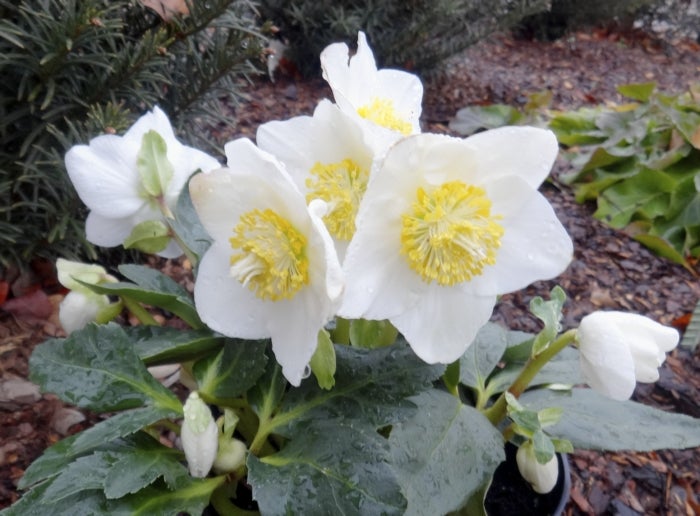Darrell Blackwelder column: What can I do in the garden?
Published 12:00 am Friday, December 26, 2014

- Cooperative Extension The Christmas rose, a white hellabore, will bloom around this time of year.
Recent rains are a real pain during the holiday season but they’re necessary with needed moisture for our lawns and landscapes.
Even though cold winter weather is now bearing down, homeowners are contemplating productive vegetable and beautiful flower gardens this spring. Below are a few questions received over the past days.
Question: I read somewhere that fruit trees and other plants may need an application of dormant oils. What are these and when is the best time to apply dormant oils or sprays to my fruit trees?
Answer: Horticultural oils control insects during the dormant season. These often work by membrane disruption or some or by suffocation. These are generally used in the winter months to control scales insects and mites. Summer oils and dormant oils can be applied at any time of year, including the winter. Apply any time during the winter as long as the temperature is above 40 degrees and under 65 degrees. Do not apply when the fruit blossoms are blooming or showing color. Go to http://www.ces.ncsu.edu/depts/ent/notes/Other/not45.html for more detailed information.
Question: I have a group of pecan trees and only two of the trees do well. The other two never bare fruit. What can I do to make the trees bare?
Answer: The trees may be seedlings. Only grafted cultivars are recommended for planting for a reliable crop. Many seedling trees bear poorly and have small nuts.
Question: I sowed grass earlier this fall and got a decent stand. I’ve raked all the leaves and now I would like to top dress the grass. What is the proper fertilizer to use? Answer: In the fall, fescue grass needs 2 pounds of actual nitrogen per 1,000 square feet for adequate growth. This amount should be split into two to three applications for continuous growth from September through November. Premium fertilizers are premeasured usually in 5,000 and 10,000 square foot bags. Grade fertilizers such as 10-10-10 are applied at 20 pounds per 1,000 square feet to provide 2 pounds of nitrogen per 1,000 square feet. It’s late, but you should use some fertilizer now, either premium or grade. Go to http://www.turffiles.ncsu.edu/PDFFiles/004175/Carolina_Lawns.pdf for more detailed information on fescue lawn care.
Question: Our white hellebore’s in full bloom. Is this common?
Answer: There are more than 20 species of hellebores that will grow in our area. According to landscape specialists, the Christmas rose will flower around Christmas in well protected areas; however it normally flowers in late winter to early spring. Go to http://plants.ces.ncsu.edu/plants/all/helleborus-orientalis/ for more detailed information.
Darrell Blackwelder is the county Extension director in Rowan County with horticulture responsibilities with the North Carolina Cooperative Extension Service. Learn more about Cooperative Extension events and activities by calling 704-216-8970, Facebook or online at www.rowanextension.com




